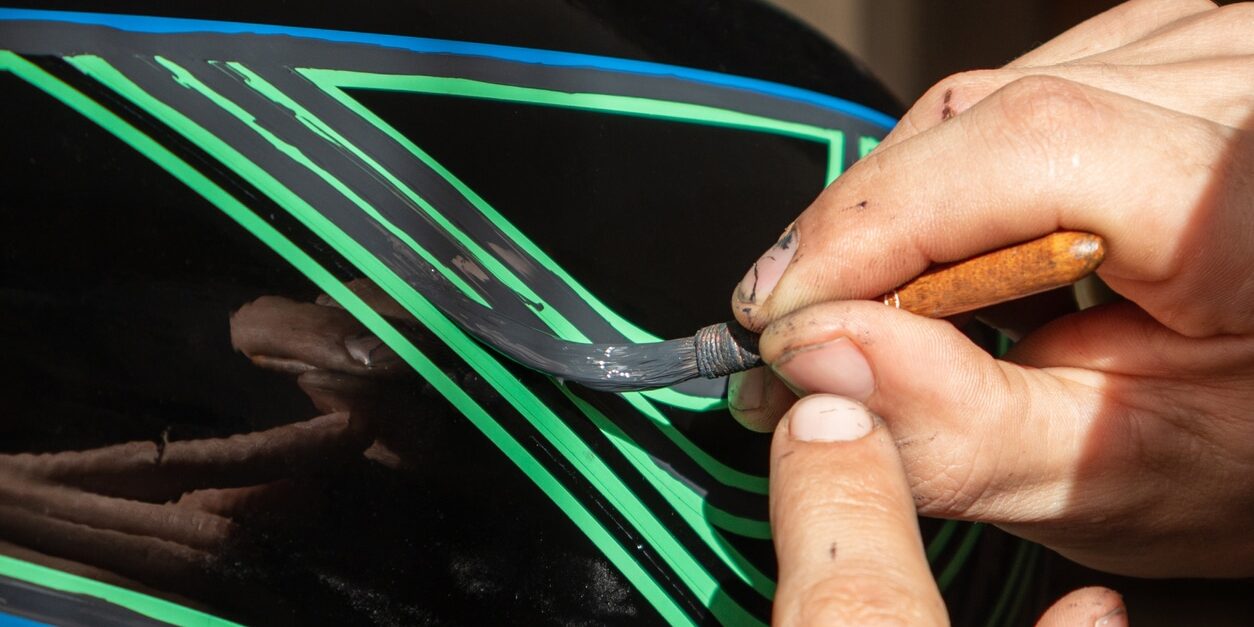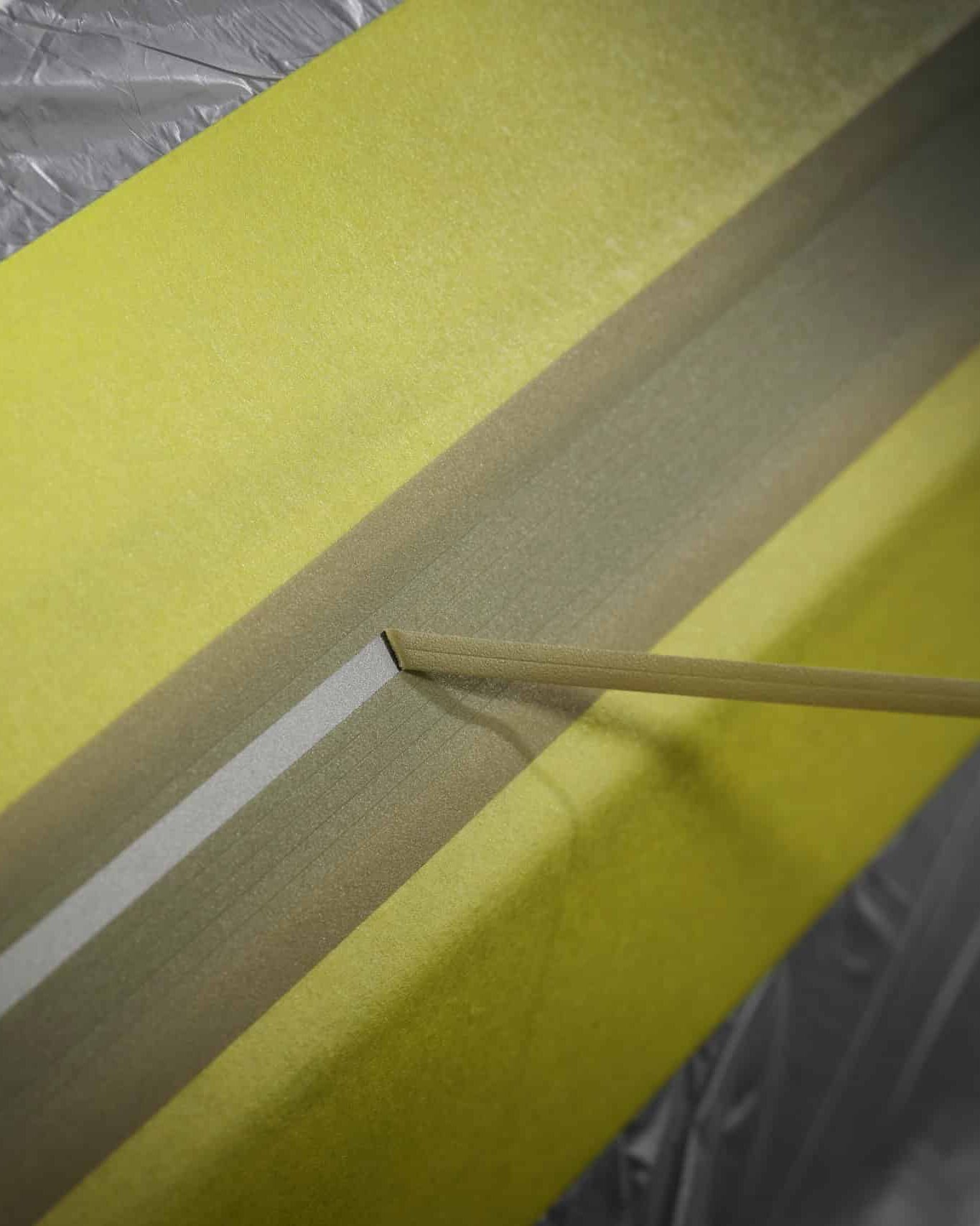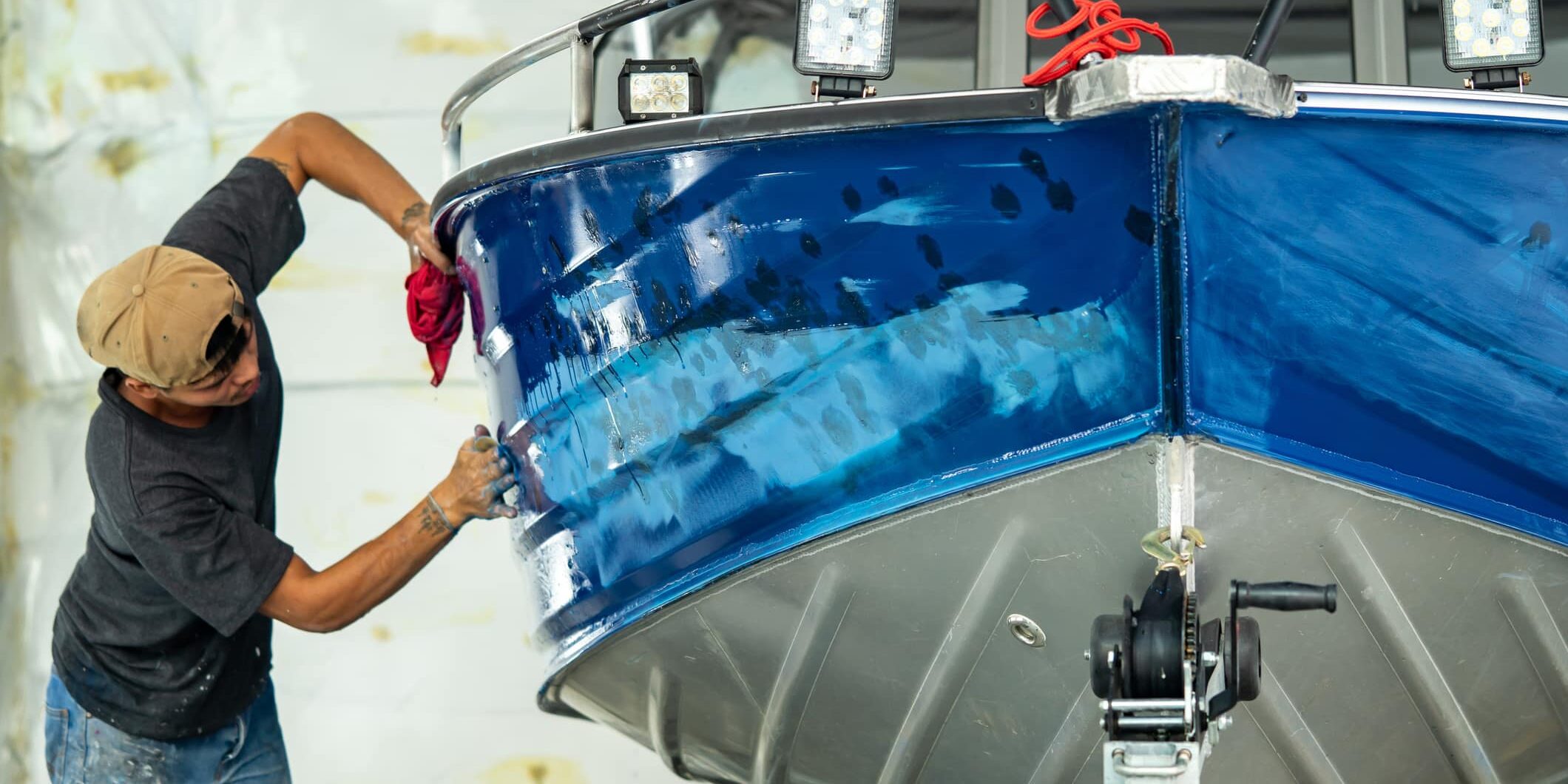

Why paint a waterline on a boat
A waterline is considered standard practice in the marine manufacturing space. At a basic level, it’s a safety feature, allowing the helmsman to assess the weight of the boat to ensure it doesn’t sink during a journey.
There are other functions of the waterline, though. It also serves as the boundary for anti-fouling paint – paint that protects the boat from marine growth like algae, barnacles, and molluscs that can cling to the hull and increase drag in the water.
Outside of these practical functions, a sharp, new waterline will enhance the look of the boat.
Challenges of masking and painting a perfect waterline on a boat
Masking and painting a waterline on a boat is a tricky job, let’s be honest. There are several important factors to consider, such as the height of the waterline, the cleanness of the application, and avoiding overspray at all costs to deliver a functional and aesthetically pleasing waterline.
A well-marked waterline demonstrates a clear understanding of how the vessel will sit in the water once it’s loaded with people and/or cargo.
Masking a boat waterline: Step by step
1. Choose the correct tools and paints
The foundation of professional-looking results is in selecting the proper materials to start with. To paint a boat, you can’t just use any old paint and tape; you have to use marine-grade paints and masking tapes.
Consider which properties your chosen tape should have. For instance, a lower tack tape might be best since it’s less likely to damage paint underneath upon removal.
JTAPE Fine Line Masking Tapes are designed to offer precision lines, with flexibility and water resistance, making them ideal for working on boats to paint waterlines. JTAPE 130°C Flat Orange Precision Masking Tape can create sharp, crisp lines, whether you’re working on straight or curved surfaces on a boat. Meanwhile, Orange Fine Line Masking Tape offers excellent temperature resistance, flexibility and a translucent appearance, which is handy for accurately painting a boat’s waterline.
2. Prepare the boat’s surface
To ensure that the waterline stands the test of time, proper surface preparation is critical. This will also ensure that the waterline has a smooth finish. Start by thoroughly cleaning the hull of the vessel with marine-grade solvents, which will remove salt, grime, and grease.
Next, sand the area to a smooth, even texture and use this opportunity to fill in any chips or scratches that you encounter.
Once the surface is clean and smooth, mark the waterline using a laser level set to the boat’s draft.
3. Apply masking tape
Use a high-quality, marine-grade masking tape to mask the waterline. Keep the tape under tension to follow the hull’s contours cleanly, preventing gaps or wrinkles. It’s important not to rush this process, take the time to adjust and reposition the tape until you’re satisfied. JTAPE’s fine line tapes are purpose-made for easy positioning while still delivering accurate, dependable results without losing adhesion.
4. Apply paint to the waterline
With the appropriate masking in place, it’s now time to apply anti-fouling paint carefully along the marked area. Anti-fouling paints are specifically formulated to prevent marine growth and protect the hull below the waterline.
Each type of paint will have slightly different instructions in regards to drying times and the materials it can be used on, so be sure to check before beginning the painting process. It’s worth checking the recommended application process before you commit to purchasing any anti-fouling paint.
5. Remove masking tape
Once the paint has dried adequately (not completely, to avoid cracking), gently peel away the masking tape. JTAPE products are designed to leave no adhesive residue, ensuring that your crisp waterline remains clean and sharp without the need for additional clean-up.
With high-quality marine masking tapes and a methodical, professional approach, it’s entirely possible to achieve a precise and durable waterline on any vessel, no matter your level of expertise. The right tools and techniques make all the difference.

